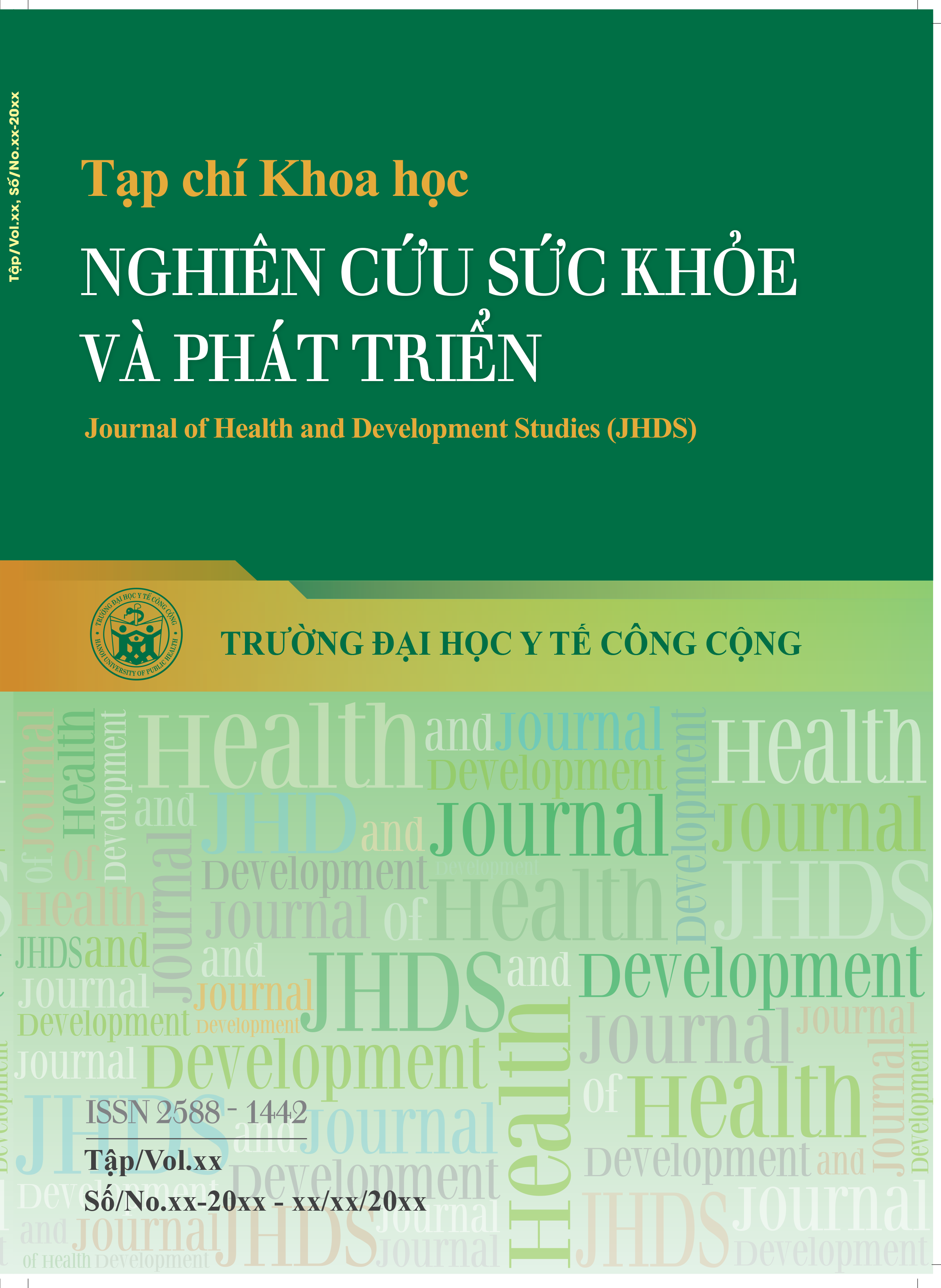Tạp chí
Khoa học Nghiên cứu Sức khỏe và Phát triển
(Journal of Health and Development Studies – JHDS)
Trường Đại học Y tế công cộng
ISSN (Print): 2588-1442
ISSN (Online): XXXX-XXXX
https://jhds.edu.vn
Preventive Medicine System Reform: studying the establishment process of Provincial Center for Disease Control in Viet Nam
- Mã bài báo : SKPT_19_038
- Ngày xuất bản : 06/04/2020
- Số trang : 7-18
- Tác giả : Bui Thi Thu Ha
- Lượt xem : ( 818 )
Danh sách tác giả (*)
- Bui Thi Thu Ha 1 - Hanoi University of Public Health
- Pham Van Tac 1 - Department of Personnel and Organization, Vietnam Ministry of Health
- Nguyen Lan Huong 2 - Department of Personnel and Organization, Vietnam Ministry of Health
- Nguyen Van Hau 3 - Department of Personnel and Organization, Vietnam Ministry of Health
- Le Lan Huong 4 - Department of Personnel and Organization, Vietnam Ministry of Health
- Le Minh Thi - Hanoi University of Public Health
- Duong Thi Tien - Hanoi University of Public Health
Objectives: To study the implementation of the center for disease control (CDC) model at the provincial level from 2015 to the present, and to analyze pros and cons of the implementation of this model.
Methods: The study applied cross-sectional design, combining quantitative and qualitative. Quantitative study applied self administration questionaires in 63 provinces across the country from April to July 2019, and qualitative research conducted with 52 key informants through 15 in-depth interviews and 4 focus group discussions in Hanoi, Lao Cai, Daknong, and Ba Ria Vung Tau. Quantitative data was analysed by SPSS. Qualitative data was transcribed, coded and analysed using Mindjet Mindmanager.
Results: Preparation for CDC agenda setting and policy development was from 2012-2016, and the pilot was in 2017. By July, 2019, there were 52/63 provinces have established CDC model, 7 provinces were in process of approal, and only 4 provinces have not developed project proposal. In general, the implementation of the CDC model in provinces was on track of Vietnam Ministry of Health’s roadmap. The implementation process was relatively quick. Some of the initial difficulties in implemention included a surplus of administrative personnel, not having a head office, and financial management.
Conclusion: The implementation of the CDC model is relatively smoothy and ensures the roadmap of the Ministry of Health. The study recommends learning exchanges among provinces that have and going to implement the CDC model to learn from experience in assigning tasks and management more effectively.
- Chủ đề :
- Loại bài báo : Nghiên cứu gốc
- Chuyên nghành : Chuyên Ngành Y
 Thông tin liên hệ : Bui Thi Thu Ha
Thông tin liên hệ : Bui Thi Thu Ha Email : bth@huph.edu.vn
Email : bth@huph.edu.vn Địa chỉ : Hanoi University of Public Health
Địa chỉ : Hanoi University of Public Health
Bài báo liên quan
- International scientific publication achievements of medical, public health and pharmacy universities, faculties and research institutes in Vietnam in 2019
- Factors associated with depression among the elderly living in Chuong My district, Ha Noi, 2019
- Prevalence and Factors Associated with Lower Reproductive Tract Infections Among Married Women Aged 18–49 in Dong Phu Commune, Long Ho District, Vinh Long Province, 2018
- Awareness of Parents/Caregivers on Child Drowning Prevention in 8 provinces in Viet Nam, 2018
- Prevalence of autism spectrum disorders and their relation to selected factors among children aged 18-30 months in Hoa Binh province, 2017
- Microbiological Quality Assessment of Edible Ice in three districts of Cau Giay, Nam Tu Liem and Bac Tu Liem, Ha Noi 2018
- Assessing the food safety management for bottled water processing premises in Dak Lak Province in 2018
- Training Needs Assessment for Bachelor of Rehabilitation Techniques in Viet Nam
- Health Information Systems for Early Warning and Surveillance of Infectious Diseases and Public Health Events in Quang Ninh province, 2019
- Preventive Medicine System Reform: studying the establishment process of Provincial Center for Disease Control in Viet Nam
Bài viết mới nhất
- Một số trang web hữu ích đối với các nhà khoa học
- Dành cho chuyên gia
- Tạp chí Khoa học Nghiên cứu sức khỏe và Phát triển duyệt tối đa 1,0 điểm ngành Y trong Danh mục Tạp chí khoa học được tính điểm của Hội đồng giáo sư Nhà nước
- CHÚC MỪNG NGÀY BÁO CHÍ CÁCH MẠNG VIỆT NAM (21/6)
- GS.TS Hoàng Văn Minh - Hiệu trưởng Nhà trường 'lọt top' nhà khoa học có chỉ số trích dẫn hàng đầu thế giới

 File toàn văn
File toàn văn